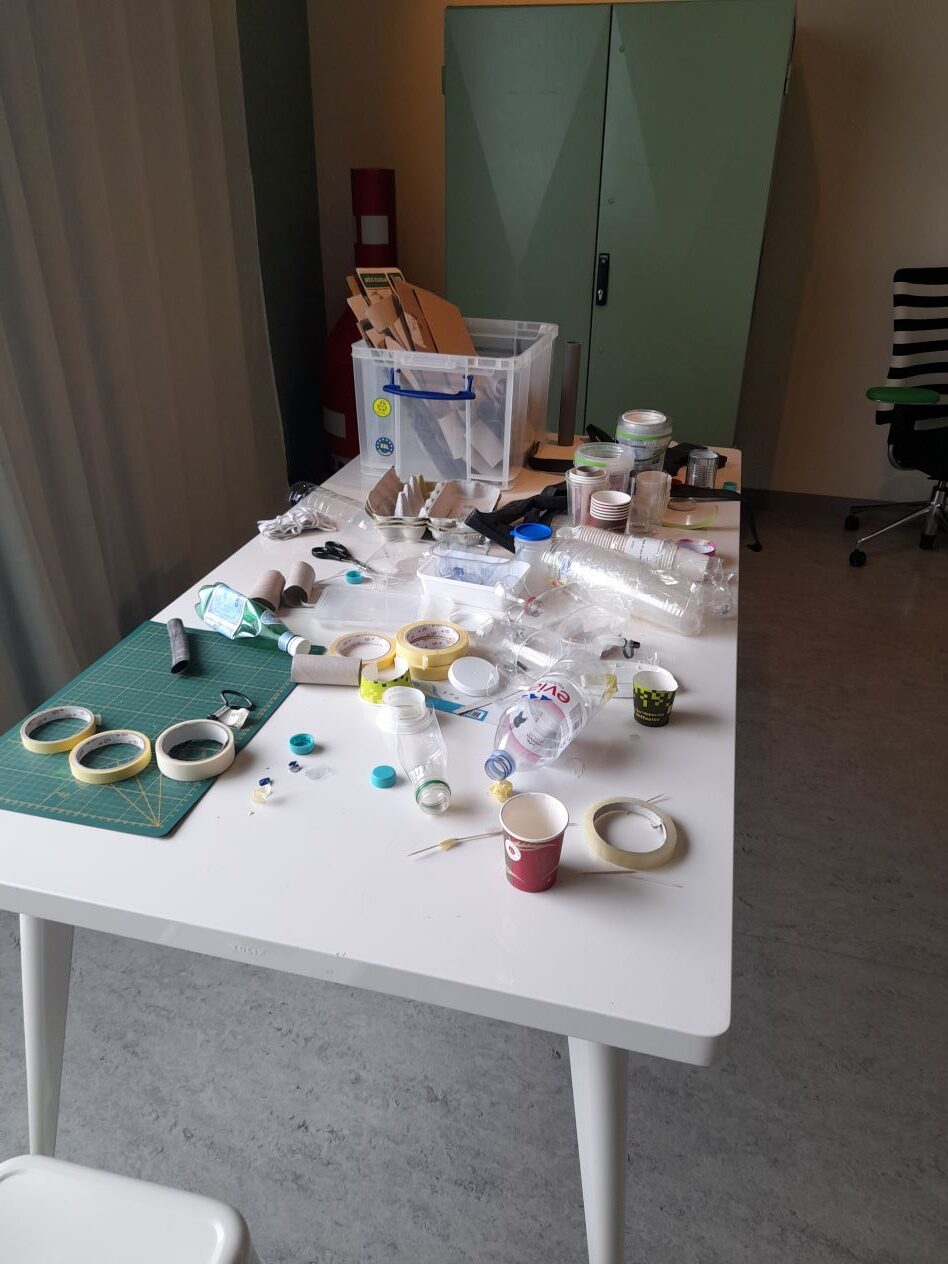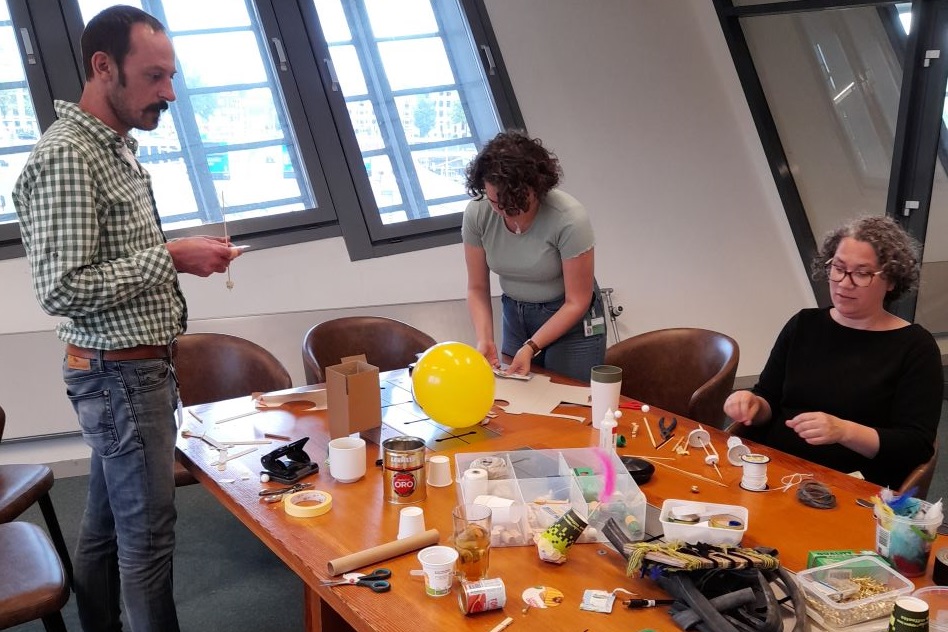A few weeks ago NEMO staff tested one activity that is foreseen to be included in our TINK@SCHOOL project Toolkit. Let’s find out how it went!
Thanks Judith Bal and Inka de Pijper for sharing the process and your insightful tips !
****
The activity tested was: Make something that moves in a quirky way. We tried this activity with a few colleagues and were happy with the results but were curious what less experienced tinkerers would come up with. That’s why we tested the activity with visitors from NEMO. The test was held on a Wednesday afternoon, it was done with around 12 families with children ranging from 6 to 18 years old.
Prompt: Because there was a big variety in the outcomes (a wobbly cup, a car, a balloon car), with the intern test we were a bit worried that the prompt might be to open. We were very curious what visitors would come up with.
The first part of the test we started with the prompt: Make something that moves funny. Most of the groups forgot the ‘funny’ part while tinkering and just focused on making something that moves. Which was similar to our test in the office, resulted in the participants making a wide variety of outcomes, more than half of the participants made vehicles, like a boat or a car or an airplane. It gives the activity more of a crafting vibe than tinkering. The prompt is so broad you can make anything you want, you are not challenged to solve a problem or work a bit longer on the project.


Half way through the test we had the idea to change the prompt to: make something that wobbles. This made the participants step away from making existing moving things, like vehicles and start trying out making random things that can wobble. It gave room for more investigation. For example ‘What makes something wobbly; is it to do with balance, weight, distribution of weight etc.’ The participants where more Tinkering with their ideas and designs instead of just making/building an object.
Other observations:
- Most participants really liked to build something and were proud of what they made.
- Participants want to take their creations home.
Funny conversation with a kid building a cardboard boat that didn’t wobble:
Facilitator: What are you making?
Participant: A boat.
F: And what is wobbly about it?
P: It is a boat!
Materials: This activity is about re-using waste materials, so we tested the activity with stuff we collected: cups, take away trays, cardboard, egg cartons, cardboard tubes etc. Besides that, we had a glue gun and two boxes with materials; popsicle sticks, tape, glue, scissors, magnets, skewers etc. Some observations about the materials:
- The glue gun is very popular to use. How ever some participants are just using the glue gun as a fun activity, so maybe not add it next time.
- Materials we missed: heavy materials like blocks or something to stabilize objects.
- Maybe some wobbly eyes and feathers but these aren’t really sustainable.
A quote from the participants: “I am a teacher and would love to see what my pupils would create if I would do this in class”

Things to try out in a next test:
- Run the activity with students instead of families.
- Try out what happens when we show some examples of wobbly things, like a rocking chair, balancing sculpture, wobbly toy and/or examples of tinkered wobbly objects.
- Make the connection to ‘sustainable/green’ materials clear within the activity.
- Check if we can also make a connection to curriculum, for example on the topic of balance.

